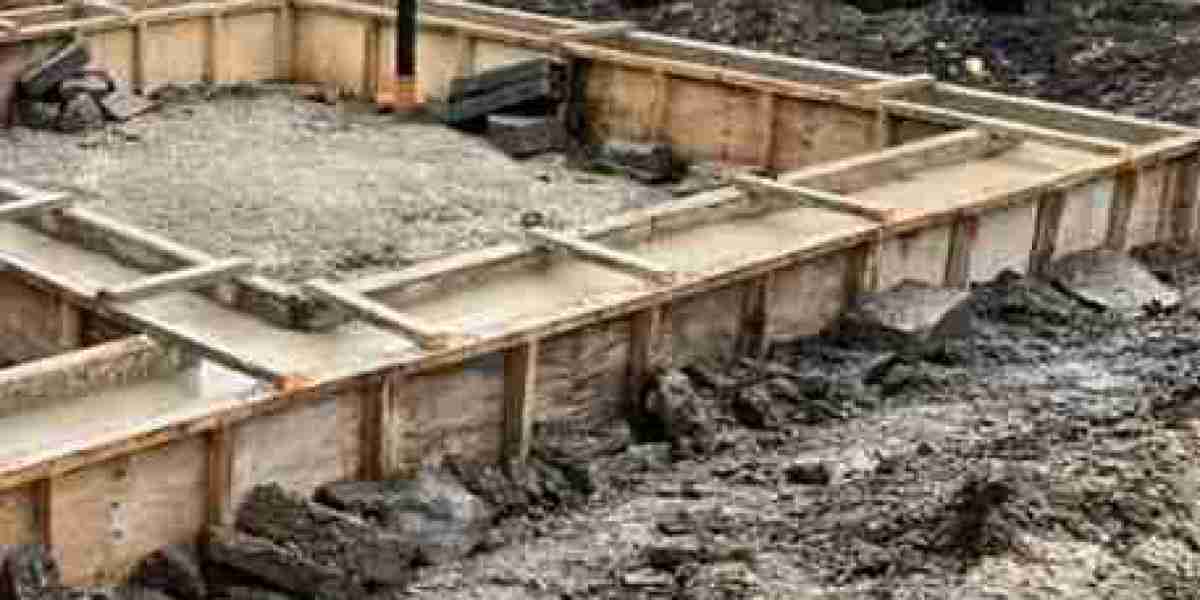In the world of construction, the foundation of a structure is more than just a starting point it’s a symbol of stability, safety, and long-term reliability. Whether you're erecting a multi-storey office complex, an industrial warehouse, or a shopping centre, getting the foundation right is critical. This is where commercial piling services come into play, offering tailored support systems that ensure the structural integrity of buildings across diverse landscapes and soil conditions.
As construction techniques evolve and building requirements become more complex, so too does the demand for piling systems that can handle heavy loads while remaining cost-effective, efficient, and environmentally considerate.
Understanding the Importance of Piling in Commercial Construction
Piling serves as the backbone for structures that require deep foundations. These foundations are typically used when the surface soil is not strong enough to support the weight of the building. Instead of relying on shallow footings, piling transfers the load of the structure to deeper, more stable layers of soil or rock.
Commercial projects particularly benefit from this technique due to the size, scale, and load-bearing demands involved. Unlike residential piling, commercial piling often involves dealing with expansive sites, variable ground conditions, and tight project timelines. The reliability of the piling method chosen significantly influences the speed, safety, and success of the entire build.
Types of Commercial Piling Methods Used Today
Different piling techniques are employed based on the nature of the project, ground conditions, and structural requirements. Among the most commonly used methods are:
Driven Piles
These piles are driven into the ground using mechanical hammers. They are often used in areas where soil displacement is not a concern. Their high load capacity and immediate load-bearing ability make them suitable for large-scale projects.
Bored Piles
Also known as drilled shafts, bored piles are constructed by removing soil and pouring concrete into a hollow. This method is ideal in urban locations where noise and vibrations need to be minimized. It allows for greater control over depth and diameter, which is essential for complex builds.
CFA (Continuous Flight Auger) Piles
This technique combines the advantages of driven and bored piles. A continuous auger drills into the soil while simultaneously filling the hole with concrete as it is withdrawn. CFA piles are efficient and minimize disruption to surrounding areas.
Steel and Precast Concrete Piles
These piles offer high strength and are often used where extreme load-bearing capacity is required. They can be installed quickly and adjusted for varying depths and soil types, which is particularly helpful in industrial and commercial applications.
How Site Conditions Influence Piling Choices
The condition of the construction site is a major factor in selecting the right piling method. Soil type, moisture content, ground stability, and access to the site all determine whether driven, bored, or CFA piling is appropriate.
For example, soft clay or loose sand may require deeper piles with increased diameter, while rocky or compact soils can accommodate shorter piles. In areas with limited access, rigs with small footprints and low noise output are preferred. Environmental considerations, such as groundwater contamination or proximity to existing structures, also impact the final decision.
Experienced piling contractors conduct in-depth geotechnical surveys before finalizing the approach. These surveys provide valuable data that helps minimize risk, prevent unexpected delays, and optimize the overall project plan.
Benefits of Choosing a Reliable Piling Contractor
Partnering with an experienced and reliable piling contractor offers numerous advantages. First and foremost, it guarantees that your foundation will be installed correctly, safely, and in compliance with all relevant regulations and building codes. This is critical for avoiding legal issues or structural failures down the line.
Reliable contractors also bring technical expertise and access to modern machinery, which allows for faster, cleaner, and more precise installation. Their experience with a wide range of commercial sites means they can adapt quickly to on-site challenges and make real-time adjustments that keep your project on schedule and within budget.
Finally, trustworthy piling contractors are transparent in their pricing and project management, providing detailed timelines, scope documentation, and post-installation support to ensure long-term satisfaction.
The Role of Engineering in Commercial Piling Success
Behind every successful piling project lies careful planning and engineering. Engineers play a vital role in the design, testing, and monitoring of piling systems. They evaluate soil reports, calculate load capacities, and design the layout of the piles to distribute structural loads evenly.
Advanced engineering software is used to simulate how piles will behave under stress, ensuring the design is not only feasible but also optimal. During installation, engineers monitor key metrics like depth, torque, and pressure to confirm that each pile meets the intended specifications.
Ongoing collaboration between engineers, contractors, and developers helps to streamline communication and eliminate errors. This ensures that both short-term goals and long-term performance standards are met.
Sustainability in Modern Piling Practices
Sustainability is becoming increasingly important in commercial construction, and piling is no exception. Environmentally responsible piling solutions aim to reduce waste, lower emissions, and protect natural resources.
CFA piling, for instance, reduces soil displacement and minimizes vibration, which can help protect ecosystems and nearby structures. Using recycled steel and low-carbon concrete also contributes to greener construction practices.
Innovative contractors now offer low-impact piling systems and environmentally certified materials as part of their services. These solutions not only help companies meet their sustainability goals but also improve their public image and eligibility for green certifications.
Real-World Applications of Piling in Commercial Projects
Piling is used in a wide range of commercial builds, from retail centres and office blocks to healthcare facilities, schools, and transport infrastructure. Each of these projects has unique needs that must be addressed through tailored foundation systems.
In urban developments, limited space and nearby buildings make low-noise and low-vibration piling essential. On industrial sites, the focus shifts to durability and the capacity to handle heavy loads and machinery. Meanwhile, infrastructure projects often require piling solutions that can withstand dynamic forces from traffic or weather-related ground movement.
One of the best examples of adaptive engineering and skilled execution is found in the delivery of commercial piling solutions in Manchester, where diverse terrain and dense urban landscapes demand both technical precision and flexible project planning.
How to Select the Right Piling Partner for Your Project
Choosing the right piling contractor is not just about cost it’s about competence, compliance, and communication. Begin by checking the contractor’s portfolio of past commercial projects and ask for client references. Look for companies that provide detailed site assessments and customized engineering plans.
Also consider their investment in modern equipment and their ability to manage health, safety, and environmental responsibilities. A good piling contractor will also be open to working with your architects and engineers from the early stages to ensure alignment across the project lifecycle.
Finally, transparency in contracts, timelines, and contingency planning speaks volumes about a company's professionalism and accountability.
Future Trends in Commercial Piling
The piling industry is constantly evolving with the help of new technologies. From AI-driven site analysis to fully automated drilling rigs, innovations are transforming how foundations are planned and installed.
Expect to see further development in low-carbon piling materials, noise-reducing equipment, and smart monitoring systems that track pile health over time. These advancements will not only improve project efficiency but also set new standards in safety and environmental stewardship.
Additionally, modular piling solutions and prefabricated components are growing in popularity for their ability to accelerate project delivery without compromising on quality.
Conclusion
Commercial piling is far more than a construction formality it’s a critical investment in the safety, strength, and longevity of any large-scale building project. By understanding your site, selecting the right piling method, and working with a qualified contractor, you lay the groundwork for success.
As urban landscapes expand and project demands become increasingly sophisticated, having access to trusted and versatile foundation solutions is more essential than ever. With the right expertise and tools, even the most complex environments can be managed with precision and confidence.
Whether you’re planning a new build or upgrading an existing site, a reliable piling system will support not just your structure, but the vision behind it.








